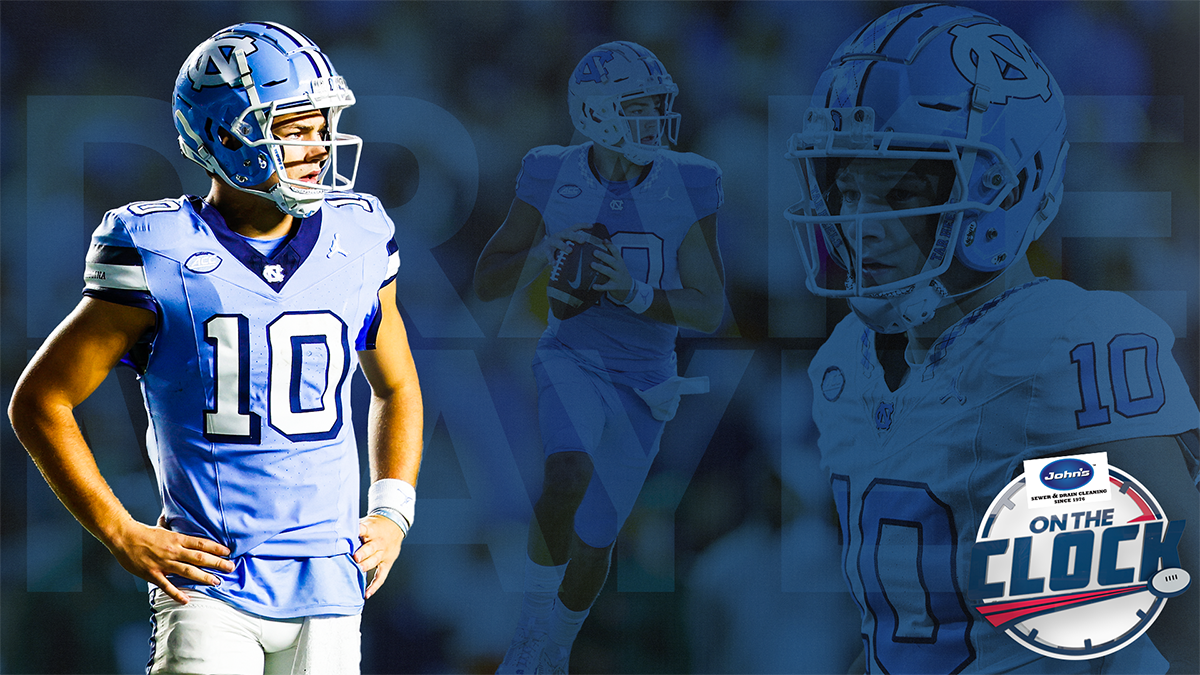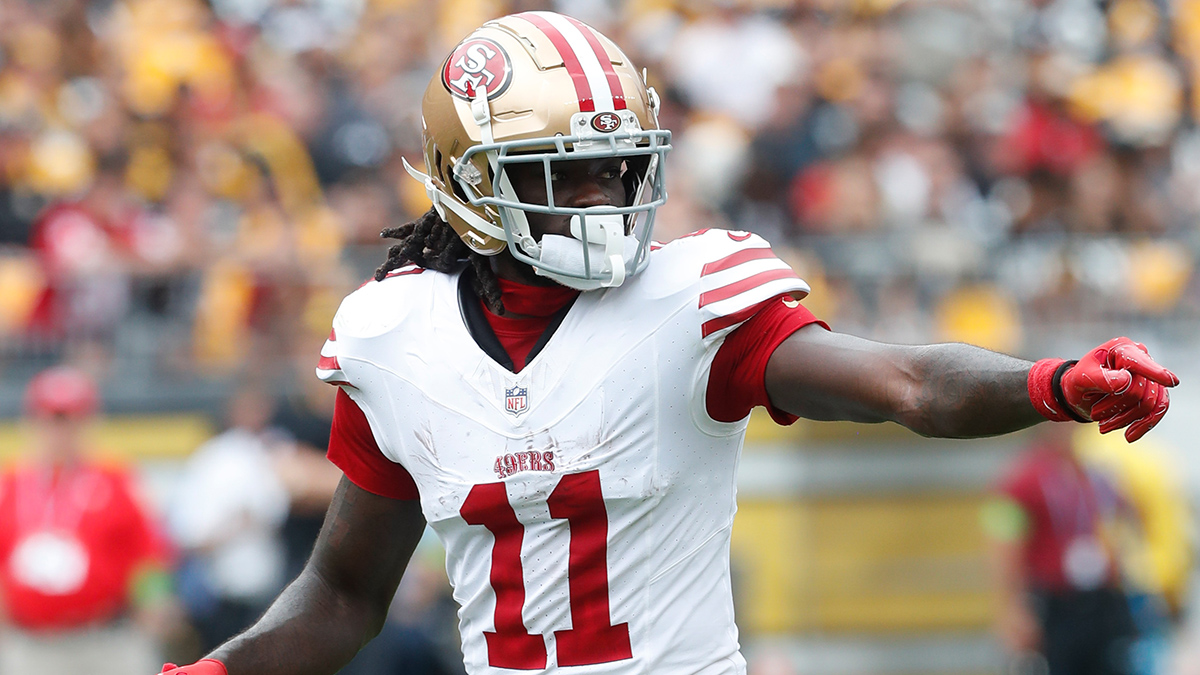Who is the No. 1 No.1?
The first pick in the NFL draft will soon be made, putting enormous pressure on a college star to meet the expectations that come with being selected at the top of the class.
Many have lived up to the hype, like Archie Manning’s sons.
Stay in the game with the latest updates on your beloved Boston sports teams! Sign up here for our All Access Daily newsletter.
Others have not, like JaMarcus Russell and Jay Berwanger, who in 1935 became the first winner of the Downtown Athletic Club Trophy (later called the Heisman Trophy) and the following year was the top pick in the NFL's first draft. He never played in the NFL because of a contract dispute and began working at a Chicago rubber company.
So, yeah, even with the first pick, there are no guarantees.
Since the NFL draft began in 1936, 14 of the 87 players selected first overall went on to have Hall of Fame careers, with recent picks like Joe Burrow still building their case and possible soon-to-be top pick Bryce Young set to start making his.
Here's a look at the top No. 1 picks selected in the history of the NFL draft:
New England Patriots
Honorable mentions: Ron Yary, Minnesota Vikings (1968); Le Roy Selmon, Tampa Bay Buccaneers (1976); Eli Manning, San Diego Chargers (2004); Ed "Too Tall" Jones, Dallas Cowboys (1974); Andrew Luck, Indianapolis Colts (2012); Cam Newton, Carolina Panthers (2011); Matthew Stafford, Detroit Lions (2009)
10. Paul Hornung, Green Bay Packers (1957)
Paul Hornung used his feet in a variety of ways to put points on the board. In 1960, the Hall of Fame halfback led the league with 13 rushing touchdowns, caught a pair of TDs and also converted 15 field goals and 41 extra points to set a then single-season record of 176 total points. He followed up that season by winning MVP and one of his four championships.
9. Orlando Pace, St. Louis Rams (1997)
Gotta give some love to the big guys. Orlando Pace became the first lineman drafted No. 1 overall in nearly three decades and went on to become arguably the most integral player on “The Greatest Team on Turf.” Marshall Faulk and Kurt Warner are in consideration for that title, but where would they be without the blocking of their seven-time Pro Bowl tackle?
8. Troy Aikman, Dallas Cowboys (1989)
It didn’t look like Troy Aikman would make this list when he lost his first 11 starts as a rookie quarterback. But just a few short years later he’d get the first of six Pro Bowls selections and win the first of three Super Bowl championships.
7. Earl Campbell, Houston Oilers (1978)
Add up the numbers from Earl Campbell’s first three seasons: 5,081 rushing yards, 45 touchdowns, one Offensive Rookie of the Year award, two Offensive Player of the Year awards, three Pro Bowl selections, two AFC Championship games and one Most Valuable Player award. The Hall of Fame running back powered through opponents to lead the league in rushing in each of his first three seasons, capped by a 1,934-yard season in 1980.
6. Terry Bradshaw, Pittsburgh Steelers (1970)
Yes, many would label Terry Bradshaw a game manager. But any quarterback who can manage his way to four Super Bowl wins has met the Hall of Fame expectations of a No. 1 pick. The 1978 MVP and three-time Pro Bowler became the first QB to win four Super Bowls, and he has since been matched only by Joe Montana and passed only by Tom Brady (seven).
5. O.J. Simpson, Buffalo Bills (1969)
Back when “The Juice is Loose” phrase was strictly about his on-field activity, O.J. Simpson led the league in rushing four times over a five-year span. He became the first running back to reach 2,000 rushing yards in a single season during his MVP season in 1973. When his Hall of Fame career came to an end, the six-time Pro Bowler trailed only Jim Brown in career rushing yards.
4. Chuck Bednarik, Philadelphia Eagles (1949)
Chuck Bednarik created one of the coldest photos in NFL history:
The Hall of Fame linebacker’s most-famous hit left New York Giants running back Frank Gifford unconscious for a few moments and sidelined for 18 months. Bednarik was 25 years old when he was selected No. 1 overall, entering the draft after he fought in the Army during World War II and then attended college. The eight-time Pro Bowler is the last player to start on both offense and defense, having also played center during his 14-year career.
3. John Elway, Baltimore Colts (1983)
John Elway orchestrated “The Drive” in the 1986 AFC Championship game, went to five Super Bowls (winning two), and retired as the NFL’s then all-time leader in passing yards. Sadly for the Baltimore Colts, none of those completed passes, game-winning drives or championship runs was for them.
The Colts made the right pick at No. 1, but they knew prior to the selection that Elway had no interest in playing for them. So, Baltimore had to trade Elway after he threatened to play baseball for the New York Yankees, who drafted the left-handed hitting right fielder in the second round of the 1981 draft and watched him hit .318 in 42 games for the Oneonta Yankees in 1982. Elway instead was dealt to the Denver Broncos, where he became one of the greatest quarterbacks of all time.
2. Bruce Smith, Buffalo Bills (1985)
No player in NFL history took down the quarterback more times than Bruce Smith.
The Hall of Fame defensive end is the all-time leader in sacks with 200, reaching double-figures in 13 seasons. The eight-time first-team All-Pro selection and 11-time Pro Bowler was named Defensive Player of the Year in 1990 when he recorded a personal best 19 sacks, and again in 1996 when he led the league with five forced fumbles.
1. Peyton Manning, Indianapolis Colts (1998)
And to think there was a debate over who would be selected No. 1 overall in the 1998 NFL Draft: Peyton Manning or Ryan Leaf? Wise choice, Colts!
The seven-time first-team All-Pro selection and 14-time Pro Bowler is the only player in NFL history to win five MVP awards. He went on to win two Super Bowls, one with the Colts and another with the Denver Broncos. He rewrote the history books by setting single-season records of 55 touchdown passes and 5,477 passing yards. He retired as the then all-time leader with 200 wins, 539 touchdown passes and 71,940 passing yards. He was voted into the Hall of Fame following a debate that lasted 13 seconds.
As for Ryan Leaf? He was selected No. 2 overall by the San Diego Chargers and threw for 3,666 yards and 14 touchdowns during a career that lasted just 25 games over three seasons.


